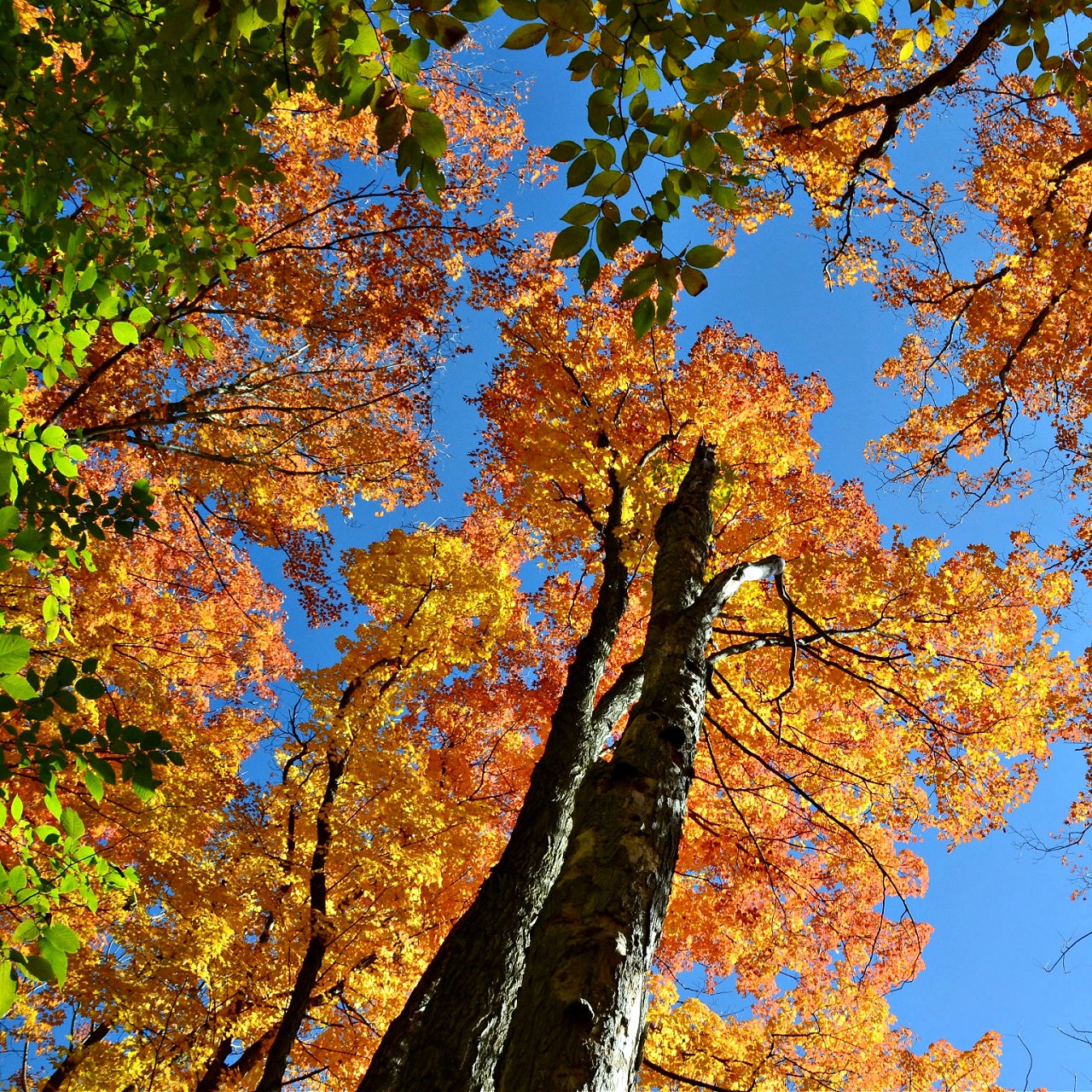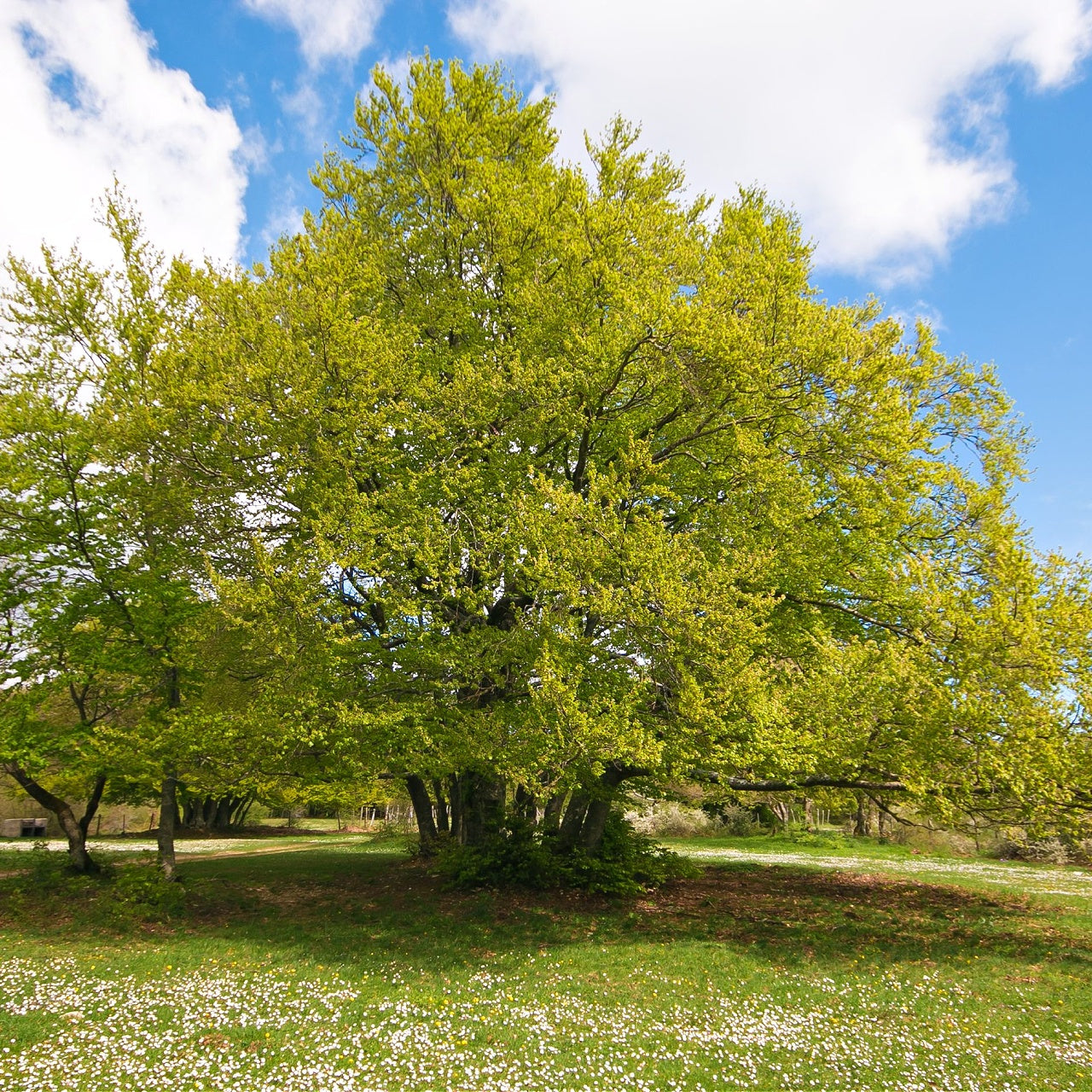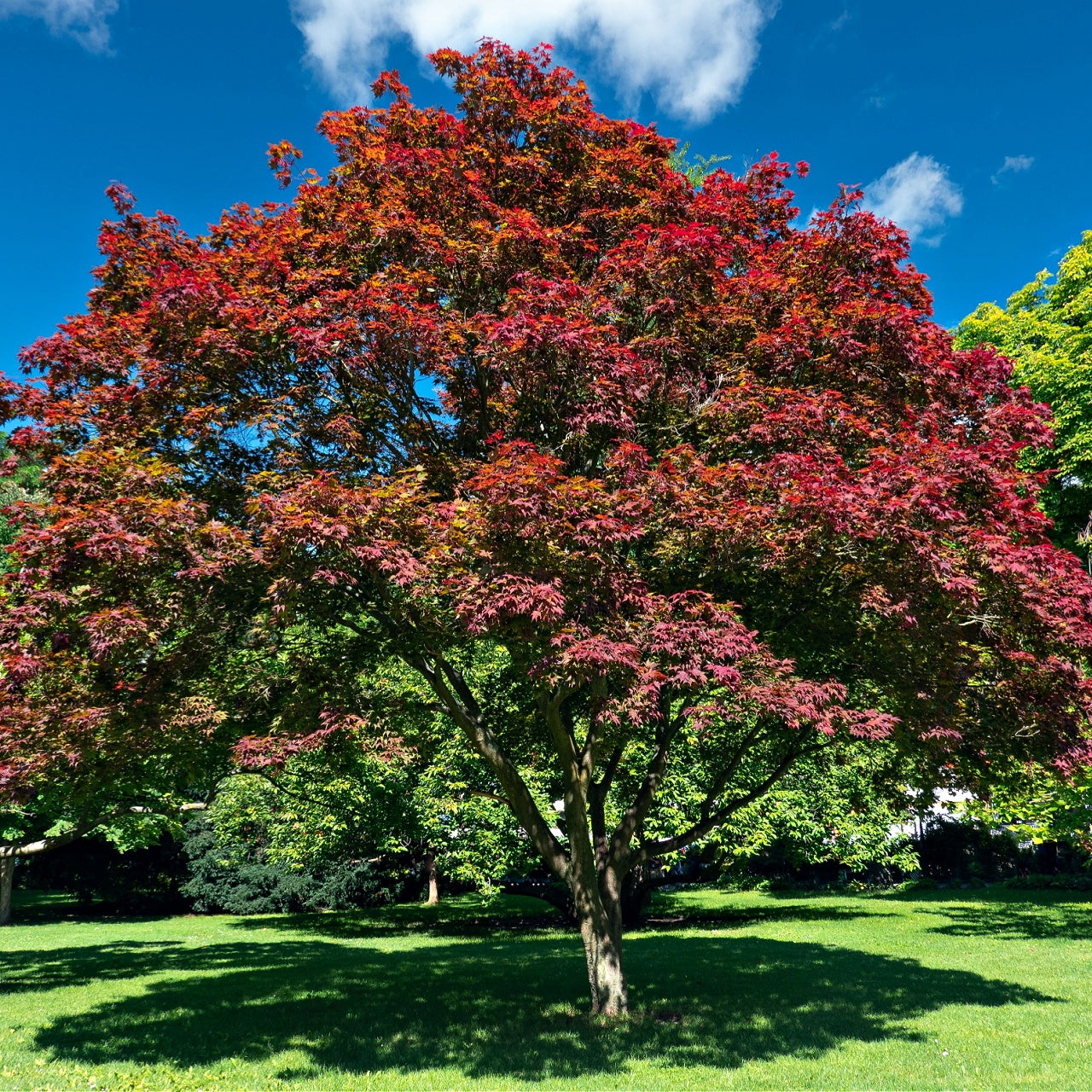
Landscaping With Weeping Willows
Landscaping With Weeping Willows
The Beauty of Weeping Willow Landscape
The Weeping Willow Tree, scientifically known as Salix babylonica, is a majestic and elegant tree species native to Northern China. As a proud member of the Salix genus, the weeping willow is renowned for its distinctive drooping branches that create a stunning weeping effect. These trees are celebrated for their rapid growth, often reaching impressive heights and widths in a relatively short period. Their adaptability to various conditions makes them popular for landscaping and gardening enthusiasts. Whether planted near a serene pond or as a focal point in a sprawling garden, the weeping willow tree brings a touch of natural grace and beauty to any outdoor space.
Landscaping with Weeping Willows: Graceful Elegance for Your Outdoor Space
Weeping willows (Salix babylonica) have long held a special place in the hearts of landscape designers and garden enthusiasts. These majestic trees can transform any outdoor space into a serene and enchanting oasis with distinctive drooping branches and graceful foliage.
This comprehensive guide will explore the many facets of landscaping with weeping willows, from choosing the right location to incorporating them into your overall landscape design.
Understanding Weeping Willows Before diving into landscaping with weeping willows, it’s essential to understand the characteristics and requirements of these magnificent trees. Weeping trees, particularly weeping willows, are celebrated for their unique beauty and cultural significance in art and literature. Weeping willows are deciduous trees known for their sweeping, pendulous branches that create a cascading effect, giving them a unique and captivating appearance.
Here are some key features of the weeping willow tree:
Size: Weeping willows are typically large trees, capable of reaching heights of 30 to 50 feet or more, with an equally impressive spread of 30 to 40 feet. This size makes them ideal for creating focal points in your landscape.
Foliage: Weeping willows' leaves are long, narrow, and light green, creating a delicate and feathery appearance. The underside of the leaves is grayish green, which contributes to their overall appearance, especially when the leaves ripple in a breeze. They provide excellent shade during the summer months.
Bark: The bark of weeping willows is grayish-brown, with deep furrows and ridges, adding to the tree’s visual interest.
Catkins: In the spring, weeping willows produce small, inconspicuous flowers known as catkins. These catkins are a source of food for early pollinators.
Adaptability: Weeping willows are adaptable trees capable of thriving in various soil types, including wet or waterlogged soil. They are often planted near water bodies such as ponds and streams. Now that we understand weeping willows better, let’s explore how to incorporate these beautiful trees into your landscape design.
Choosing the Right Location Selecting the perfect location for your weeping willow is crucial for its growth and overall impact on your landscape.
Here are some factors to consider: weak wood
Sunlight: Weeping willows thrive in full sun, so choose a location with at least 6 to 8 hours of direct sunlight daily.
Soil Quality: While weeping willows are adaptable, they prefer well-drained soil.
Proximity to Water: Weeping willows have a natural affinity for water, making them an excellent choice for planting near ponds, lakes, or streams. Their drooping branches create a picturesque reflection in the water.
Space: Given their size, weeping willows need ample space to grow and spread. Ensure the tree has enough room to reach its full potential without crowding other plants or structures.
Aesthetic Considerations: Consider how the weeping willow fits your overall landscape design. Consider whether it will serve as a focal point, a shade tree, or a backdrop for other plants.
Golden Curls and Scarlet Curls: When selecting a weeping willow, consider specific cultivars like 'Golden Curls' and 'Scarlet Curls.' 'Golden Curls' is known for its distinctive golden-green leaves with rippling margins and fast growth rate, making it a striking addition to any garden. 'Scarlet Curls features vibrant wood and spiraling stems with a distinct scarlet hue and wavy, curled edges of the leaves, making it an excellent choice for indoor displays and adding visual appeal to your landscape.
Landscaping Ideas with Weeping Willows Now that you’ve chosen the right location for your weeping willow, let’s explore some landscaping ideas to make the most of this elegant tree in your outdoor space.
Shade and Relaxation: Weeping willows are excellent shade trees. Create a comfortable seating area beneath the tree, perhaps with a bench or a hammock, where you can relax and enjoy the soothing ambiance of the tree’s swaying branches.
Water Features: Since weeping willows naturally gravitate towards water, consider adding a small pond or water feature near the tree. The reflection of the willow in the water will enhance the overall beauty of your landscape.
Bordered Pathways: Plant weeping willows along a meandering pathway to create a romantic, tunnel-like effect. As the branches hang down, they’ll develop a sense of privacy and seclusion.
Focal Point: Use a weeping willow as a focal point in your landscape design. Plant it at the center of a circular garden bed or on a slight mound to draw attention to its graceful form.
Wildlife Habitat: Weeping willows attract various wildlife, including birds and insects. To encourage these visitors, incorporate bird feeders, nesting boxes, or a butterfly garden nearby.
Nighttime Lighting: Install outdoor lighting to showcase the weeping willow’s silhouette at night. This can create a magical and ethereal atmosphere in your garden.
Underplanting: To enhance the visual appeal of the weeping willow, consider adding a layer of low-maintenance ground cover plants or ornamental grasses beneath it. Care and Maintenance: Maintaining the health and beauty of your weeping willow requires some care and attention.
Propagation and Planting
Propagating weeping willows is a straightforward process that can be accomplished through stem cuttings. To begin, take cuttings from a mature tree in either the spring or fall, ensuring they are around 18 inches long and have at least two nodes. Plant these cuttings in moist soil, and with proper care, they will develop roots within a few weeks. Weeping willows thrive in full sun to partial shade and prefer well-draining soil rich in nutrients. While relatively low-maintenance, regular watering and fertilization can promote healthy growth, ensuring your weeping willows flourish and enhance your landscape.
Designing with Weeping Willows
Weeping willows are versatile trees that seamlessly integrate into various landscape designs. As specimen trees, they can serve as striking focal points in gardens, drawing the eye with their graceful, cascading branches. When used as natural screens, their dense foliage provides privacy and a sense of seclusion. The weeping branches can be trained to create stunning, arched shapes or left to cascade naturally to the ground, adding a sense of drama and movement to the landscape. Particularly enchanting when planted near a body of water, weeping willows reflect beautifully in the water, enhancing the overall aesthetic appeal of your outdoor space.
Creating a Fairytale Landscape with Willow Branches
Weeping willows have long been associated with folklore and mythology, often symbolizing enchantment and mystery. Incorporating willow branches into your landscape design allows you to create a fairytale-like atmosphere perfect for relaxation and contemplation. Use the branches to craft a natural arbor or pergola, or even shape them into living sculptures that add a whimsical touch to your garden. With some creativity, you can transform your outdoor space into a romantic oasis where the gentle sway of the willow branches evokes a sense of magic and wonder.
Here are some essential care tips for rapid growth:
Watering: While weeping willows tolerate wet soil, they still need regular watering, especially during dry spells. Ensure the soil around the tree remains consistently moist.
Pruning: Regularly prune dead or damaged branches to maintain the tree’s shape and health. Be mindful not to over-prune, as this can stress the tree. Fertilization: Feed your weeping willow with a balanced, slow-release fertilizer in the spring to promote healthy growth.
Disease Management: Watch for common tree diseases like willow blight or canker. If you notice any signs of illness, consult a professional arborist for treatment. Historically, willow bark contains salicylic acid, which has been used in medicine for its disease-resistant properties, contributing to the tree's natural resilience.
Root Protection: Be cautious when digging or landscaping around your weeping willow, as its roots are shallow and sensitive. Avoid compacting the soil or causing damage to the root system.
Conclusion Incorporating weeping willows into your landscaping design can bring a sense of elegance and tranquility to your outdoor space. Their sweeping branches, delicate foliage, and adaptability make them a versatile addition to any garden or yard. By choosing the right location, planning your landscape design thoughtfully, and providing proper care, you can enjoy the beauty and charm of weeping willows for years to come. Whether seeking shade, a focal point, or a touch of natural magic in your garden, weeping willows have much to offer in landscaping.
Common Problems and Pests
While weeping willows are generally hardy and disease-resistant, they can encounter certain issues. One common problem is tree litter, as these trees regularly shed their leaves and branches, creating debris. Additionally, weeping willows have weak wood, making them prone to cracking and breaking, especially during strong winds. Crown gall, a bacterial disease, can also affect these trees, causing tumors to form on the branches. Pests such as aphids, mites, and beetles may attack weeping willows, potentially harming their health. Regular monitoring and maintenance can help manage these issues, ensuring your weeping willows remain healthy and vibrant.
Weeping Willows in History and Culture
Weeping willows have a rich history and cultural significance that spans thousands of years. In ancient China, these trees were highly valued for their beauty and medicinal properties and were often planted near temples and palaces. Introduced to the Western world in the 18th century, weeping willows quickly became popular ornamental trees, admired for their graceful form. They have been immortalized in countless works of art and literature, including Claude Monet’s famous painting “Water-Lily Pond and Weeping Willow.” Today, weeping willows are cherished for their beauty and symbolism, representing resilience, grace, and the enduring connection between nature and culture.
Products from the Article

Weeping Willow







